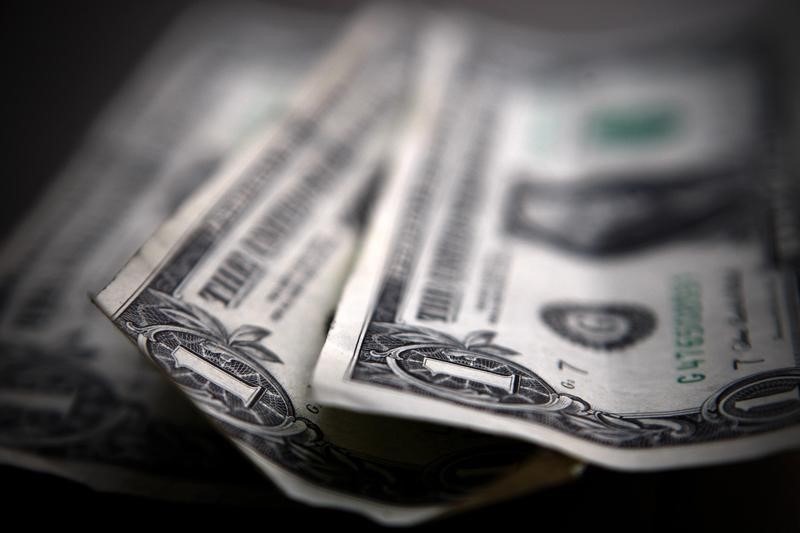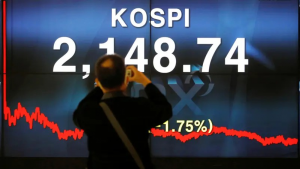The U.S. dollar slumped Thursday, with the euro firming, after President Donald Trump confirmed his aggressive tariff plans against U.S. trading partners, raising recession fears.
At 03:45 ET (08:45 GMT), the Dollar Index, which tracks the greenback against a basket of six other currencies, dropped 1.5% to 101.917, falling to its lowest since mid-October.
Dollar retreats on growth fears
Trump announced on Wednesday that he would impose a 10% baseline tariff on all imports to the United States and higher duties on some of the country’s biggest trading partners.
China was by far the worst hit, with total U.S. tariffs against the country now amounting to 54%. The European Union will be subject to 20% tariffs, while Taiwan, Switzerland, Thailand, and Bangladesh will face between 30% and 50% tariffs.
The tariffs will take effect on April 9.
The tariffs are likely to substantially boost U.S. tax revenue, said analysts at Capital Economics, but the impact on the U.S. economy will depend on what is done with the additional tax revenue.
“If it is given back to consumers via other tax cuts, then economic growth may not suffer too badly. If it is used to pay down the budget deficit, then this amounts to a fiscal tightening of more than 2%, which means the economy would be lucky to avoid a recession,” Capital Economics analysts wrote in a note.
“The blowback of US tariffs onto the US domestic economy leaves the dollar naked,” analysts at ING said, in a note.
“U.S. rates continue to be marked lower, and not until we get some surprisingly good news from the U.S. on tax cuts or deregulation may the dollar start to find some support.”
Euro gains strongly
In Europe, EUR/USD traded 1.4% higher to 1.1012, supported by the German government looking to increase expenditure on infrastructure and defence, boosting the eurozone’s largest economy in the face of U.S. tariffs.
“We don’t really buy into the story that the worst is out of the way for Europe now. The main buying point for the euro is that it’s a big, liquid alternative to the dollar – and that the dollar’s troubles (weaker US consumption) are greater than the euro’s,” said ING, in a note.
European Commission President Ursula von der Leyen said the EU has a “strong plan” to retaliate against tariffs imposed by Trump but would prefer to negotiate.
“Europe has not started this confrontation. We do not necessarily want to retaliate, but if it is necessary we have a strong plan to retaliate and we will use it,” she said.
GBP/USD traded 1.2% higher to 1.3164, climbing to its highest level since October, helped by the U.K. receiving a relatively low tariff from the Trump administration.
Yen soars, yuan weakens
In Asia, USD/JPY traded 1.5% lower to 147.01, at a three-week low, with the Japanese yen firming sharply on increased safe haven demand, as traders fretted over the implications of Trump’s tariffs.
USD/CNY traded 0.5% higher to 7.3043, with the yuan hit as Trump’s latest round of tariffs bring total U.S. duties on Chinese imports to 54% - close to his 60% tariff pledge against China, which was widely regarded as a worst-case scenario.











